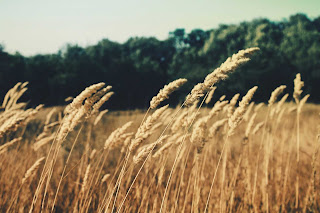
Animal InfoThe Worlds Most Dangerous AnimalsThe BearLocated in North America, Canada, North Pole, Russia and isolated pockets around the world. There are many different sub-species of bear and not all of them are vicious. However, the polar, black and grizzly varieties are deadliest. Bears will trample, maul and generally savage their prey until they’re frightened off or finish the job; and will attack for a variety of reasons, hunger being one.Responsible for: An estimated 5-10 fatalities a year.The SharkLocated in Florida, Australia, Hawaii and South Africa. Out of 360 species, only four are known killers: tiger, great white, oceanic whitetip and bull sharks. Sharks attack the only way they can – by lunging with fearsome teeth. Sharks can grip their prey easily in their powerful jaws and are capable of biting through almost anything.Responsible for: An estimated 100 fatalities a year.The JellyfishLocated Northern Australia, Papua New Guinea, Malaysia, Indonesia, the Philippines, Thailand and Vietnam. The box jellyfish is one of the most venomous marine creatures in the world; a sting can kill a man within minutes and most fatalities occur following a brush with a toxic jelly like this. The jellyfish unwinds its coiled stinging tentacles, fires them at the victim and then pumps their venom to paralyse the unfortunate recipient, usually manifesting itself as cardiac arrest in humans.Responsible for: An estimated 100 fatalities a year.The HippopotamusConsidered as Africas most dangerous animal the hippo with their gaping mouths that can open four feet wide and swinging sledgehammer heads, as well as the fact that they can outrun us on land are highly aggressive animals.Hippos will charge, trample and gore victims with alarming ferocity, often when they are blocked from deep water. Hippos have been known to upturn boats and canoes without provocation and feast on the victim within, despite being herbivores.Responsible for: An estimated 100-150 fatalities a year.The ElephantLocated in Africa and India. Elephants are unpredictable creatures, and have been known to kill zookeepers who have been with them for as long as 15 years. It is recorded that even the tamest of elephants can attack without warning, though it is thought that most elephants do not realise the harm they do with almost no effort. Considering their huge size – the average elephant weighs over 6 tons – they trample and gore using their fearsome tusks and are capable of causing untold amounts of devastation.Responsible for: An estimated 300-500 fatalities a year.The CrocodileLocated in North America, Africa and Australia. Crocodiles are dreaded prehistoric creatures capable of killing more people yearly than figures show due to the isolated areas where attacks are likely to take place and distance from help. With terrifying speed, crocodiles can launch themselves out of the water like a missile and latch hold of their prey. They then go into a death roll, spinning the victim around and around to disorientate, thereby lessening its chance of escape.Responsible for: An estimated 600-800 fatalities a year.Big CatsLocated in Africa, North America and India. The African lion is the biggest and most feared of big cats. Mountain lions stalk their prey and often attack from a vantage point. Presumably they then set about mauling the victim in a manner identical to that we’ve all seen in countless nature programs. Tigers generally attack from the back and look to bite the jugular or break the neck.Responsible for: An estimated 800 fatalities a year.The ScorpionLocated Worldwide particularly Africa, the Americas and Central Asia. Highly deadly and twice as ugly, the scorpion is a nasty critter that is probably responsible for more deaths per year than recorded, due to the isolated places they hang out and probable lack of access to antivenin. However, out of an estimated 1,500 species of scorpion worldwide, only around 25 are regarded dangerous. Scorpions paralyse their prey by pumping deadly venom through the obvious curved stinger at the end of their tails. As with all venom, humans are particularly susceptible if they are allergic – though the African spitting scorpion, who scuttles around Africa, is the most venomous, as it is able to spray venom up to a meter.Responsible for: An estimated 800-2,000 fatalities a year.The Venomous SnakeLocated in Africa, Asia and North America. Though there are more than 2,000 species of snake, 450 of which are venomous, only 250 are capable of killing a man. Snakes are very fast and any part of the human body is a good place for a bite, seeing as the venom can flow into the bloodstream within minutes; although those near major veins and arteries will travel faster. Snakes use their venom to paralyse their prey. A fully grown king cobra (pictured) can rear up so it looks a man in the eye; others can spit venom into the eye.Responsible for: An estimated 50-125,000 fatalities a year.The MosquitoLocated worldwide, harmful in Africa, Asia and North America. The mosquito is the most dangerous creature in the world, due to its ability to spread disease with alarming efficiency. Best known for spreading deadly malaria, mosquitos also spread elephantiasis, yellow fever, dengue fever and West Nile virus, which was recently introduced to the US and is now prevalent in all states. Using serrated mouth parts, female mosquitoes pierce the skin and inject saliva containing a thinning agent to liquidise the blood. Most people won’t know that they have been bitten until the immune system reacts, resulting in red, itchy bumps that continue to itch for days after the initial bite.Responsible for: An estimated 2-3 million fatalities a year.










Actually, you can find the videos of these most dangerous animals on Kaotic. I mean, the gore videos, not science videos.
ReplyDelete